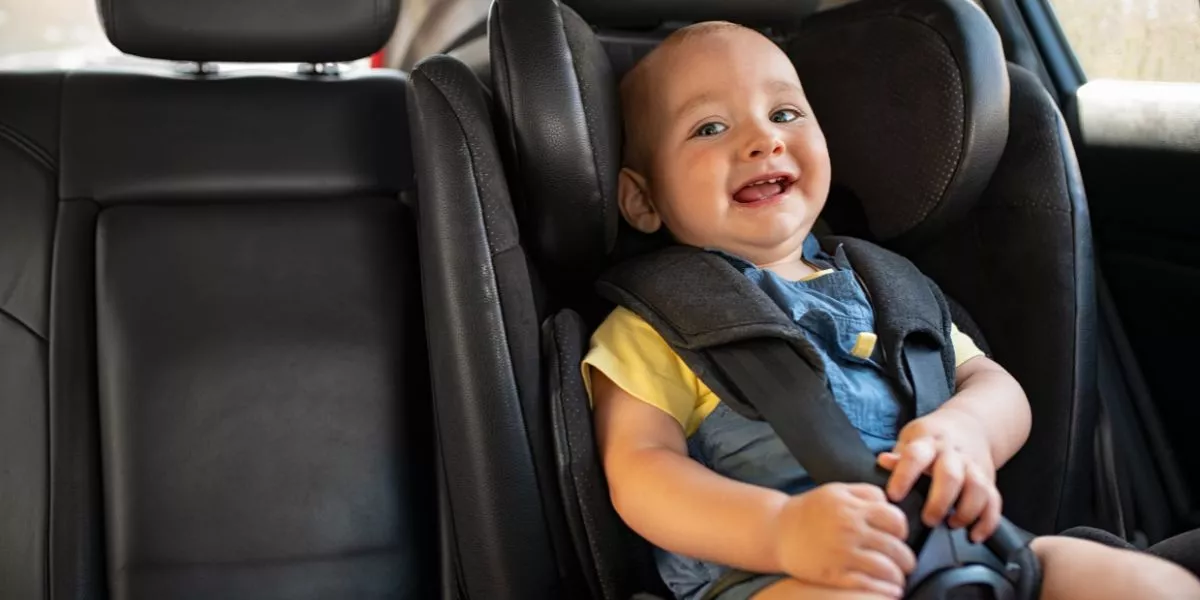
Blog
How Do I Ensure Babys Safety When Traveling in a Car?

Ensure your baby's safety when traveling in a car by properly installing the car seat in the back seat, securing it with seat belt or LATCH system, and checking harness strap snugness regularly. Position your baby in a rear-facing seat, avoid bulky outerwear, adjust harness straps snugly, and plan for breaks on long journeys to keep your little one safe and comfortable.
Properly Install Car Seat
Ensure your child's safety by correctly installing the car seat. Begin by reading the car seat manual thoroughly to understand the installation process.
Place the car seat in the back seat of your vehicle, as it's the safest spot. Use either the seat belt or the LATCH system to secure the car seat in place. If you opt for the seat belt, make sure it's locked securely. If using the LATCH system, ensure that it's attached correctly and tightened to minimize any movement.
Double-check that the car seat is at the correct angle, usually indicated by a level indicator. Verify that the harness straps are at the appropriate height and snugly fit your child. Lastly, give the car seat a firm shake at the base to confirm it's securely installed.
Regularly inspect the car seat to ensure it remains properly installed and make any adjustments as needed. By following these steps, you can help keep your child safe and secure during car rides.
Secure Baby in Rear-Facing Position
To keep your baby safe in the car, securely position them in a rear-facing car seat. Rear-facing car seats are designed to provide optimal protection for infants and young children in the event of a crash. This position helps distribute the force of a collision evenly across the child's body, reducing the risk of injury to their head, neck, and spine.
When installing the rear-facing car seat, make sure it's securely fastened according to the manufacturer's instructions. The seat should be reclined at the correct angle to support your baby's developing neck and spine while allowing them to breathe easily.
Ensure that the harness straps are snug and positioned at or below your baby's shoulders. The chest clip should be at armpit level to keep the straps properly positioned on your child's body. Regularly check the tightness of the harness to maintain a secure fit as your baby grows.
Remember to adjust the car seat as your baby develops and follow the manufacturer's guidelines regarding weight and height limits for rear-facing use. By securely positioning your baby in a rear-facing car seat, you're taking a vital step towards ensuring their safety during car journeys.
Avoid Bulky Outerwear in Car Seat
Avoid placing bulky outerwear on your baby when securing them in the car seat. While it may seem like a cozy option for your little one, bulky jackets or snowsuits can create a dangerous gap between your baby's body and the harness straps. When the car seat straps are fastened over thick layers, in the event of a crash, the force can compress the material, leaving the straps too loose to properly secure your baby. This increases the risk of your baby slipping out of the harness or suffering more severe injuries.
To ensure your baby's safety, dress them in thinner layers before strapping them into the car seat. You can then place a blanket over your baby to keep them warm. After securing your baby in the harness, you can tuck their coat around them or use a car seat cover to provide additional warmth. Remember, it's crucial to prioritize proper harness fit over bulky outerwear to keep your baby safe during car rides.
Regularly Check Car Seat Fit
It's important to regularly check the fit of your baby's car seat to ensure optimal safety during travels. A properly fitting car seat is crucial in protecting your baby in case of sudden stops or accidents.
Begin by adjusting the harness straps to fit snugly over your baby's shoulders without any slack. The chest clip should be positioned at armpit level to keep the straps secure. Ensure that the car seat is installed at the correct angle, usually indicated by a level on the side of the seat.
Check for any movement or looseness in the seat once it's installed – it shouldn't shift more than an inch in any direction. Regularly inspect the car seat for any signs of wear and tear, and follow the manufacturer's guidelines for maintenance.
Plan for Breaks on Long Journeys
Consider scheduling regular breaks during long journeys to ensure the safety and comfort of your baby while traveling in a car. Breaks are essential for both you and your baby to stretch, change positions, and attend to any immediate needs. Plan to stop every 1-2 hours or as necessary, depending on your baby's feeding, diaper change, and sleep schedule.
During breaks, find a safe spot to park, away from traffic, and never leave your baby unattended in the car. Take your baby out of the car seat, allow them to move freely, and engage in some interactive play to keep them stimulated. Remember to pack essentials like diapers, wipes, snacks, and toys to make the break time enjoyable for your little one.
Utilize breaks to feed your baby if needed, check their diaper, and ensure they're comfortable before continuing the journey. These short intervals not only enhance your baby's well-being but also help you stay refreshed and focused on driving safely. By incorporating regular breaks into your travel plan, you can make the journey more pleasant for both you and your baby.
